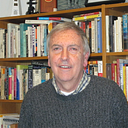Member-only story
Signs, Symbols and Stones: The Portuguese American Urban Ethnic Landscape #9
More than 95% of Portuguese Americans identified as Catholics when they arrived in the United States. For almost all of the immigrants the Catholic parish and its church acted as a magnet for the development of neighborhoods. Each of the major Portuguese neighborhoods in this study, two in New Bedford and three in Fall River, is focused around Catholic churches offering masses in Portuguese. These churches were established as Portuguese National Parishes, staffed by Portuguese speaking priests and offering all masses in Portuguese. Now masses in English are common as well.
Common church names for parishes serving Portuguese communities include Our Lady of Fatima and two saints born in Portugal, St. John of God and St. Anthony of Padua.
